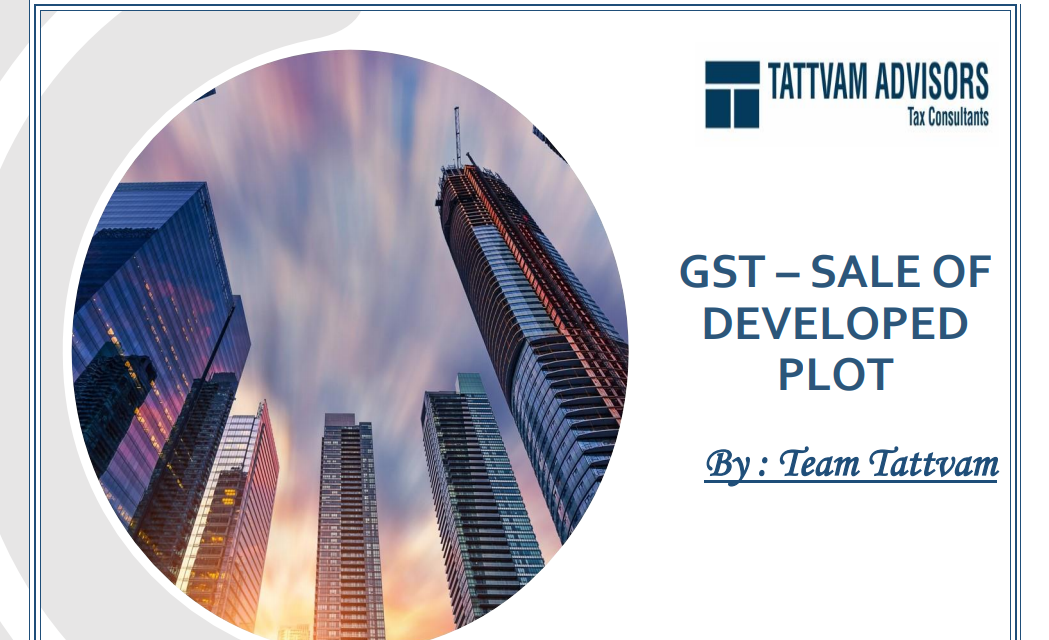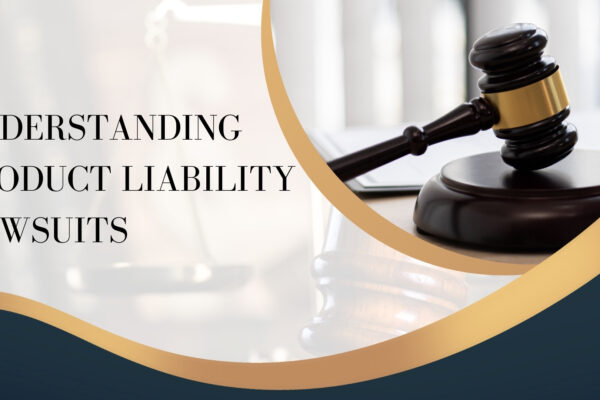GST on Sale of Developed Plot
Table of Contents
GST on Sale of Developed Plot
The scheme of legislative powers under the Constitution of India is clearly demarcated with separate fields being given to the Centre and State to legislate. These powers are governed by Article 246 read with the Seventh Schedule to the Constitution of India. It may be noted that the power to legislate taxes is no different and operates in water-tight compartments of the Seventh Schedule. However, GST is levied in powers of Article 246A and is not a subject of the Seventh Schedule. As far as GST is concerned, both Centre and States have the power to levy tax simultaneously. However, it is interesting to note that the transfer of land is neither covered undersupply of goods nor the supply of services. The intent to maintain intelligible demarcation for taxing land is also apparent from Schedule III of the CGST Act as it considers the sale of land or building as neither supply of goods nor service. However, when the transfer of land is coupled with the construction services, the same may have some implications under GST.
Recently AAR Gujarat in an application made by Sh. Dipesh Anil Kumar Naik, reported at 2020-TIOL134-AAR-GST has ruled that GST is applicable on sale of a plot of land when amenities (e.g. drainage line, waterline, electricity line, land levelling, etc.) are provided, along with the plot of land, by the landowner/developer as per the requirements of approval/ sanctioning authority. While ruling so the AAR had following observations
Ruling and observations
• A transaction shall be out of GST only if the activity is exclusively dealing with the transfer of title or transfer of ownership of land, which is immovable property or earth.
• Plotted development is a scheme which involves forming land into layout after obtaining necessary plan approval from the Development Authority, get all other permission required to take up, commence and complete what would be the layout, which would be comprised of individual sites.
• The sellers charge the rates on the super built-up basis, which includes a common area as well and not the actual measure of the plot. Thus, in effect, the seller is collecting charges towards the land as well as the common amenities, roads, water tank, and other infrastructure on a proportionate basis. In other words, such common amenities, roads, the water tank, and other infrastructure is an intrinsic part of the plot allotted to the buyer.
• Authority relied on the Supreme Court’s decision in case of M/s Narne Construction P Ltd. reported in 2013 (29) STR 3 (SC) to held that sale of the developed plot is not equivalent to the sale of land but is a different transaction.
• The activity of the sale of developed plots would be covered under the clause ‘construction of a complex intended for sale to a buyer’. Thus, the said activity is covered under ‘construction services’ and GST is payable on the sale of developed plots in terms of CGST Act / Rules and relevant Notification issued from time to time.
Issues arising from AAR
• Whether the sale of plotted land is not covered by Schedule III of the CGST Act?
• Whether activity of the sale of plotted land can be considered as construction service under the CGST Act?
Tattvam’s comments
It can be seen that the abovementioned AAR has raised various pertinent questions which go far in and questions the legislative power under Article 246A to tax any immovable property. In this article, we attempt to answer these questions and put forward our perspective on the nature of the transaction involving the sale of plotted land. We will be analyzing a case where landowners having title over the land will also be acting as a developer in respect of said plot of land and developing necessary amenities.
Schedule III of the CGST Act
Section 7(1) of the CGST Act, 2017 provides for an inclusive definition of the supply which includes the sale, transfer, barter, exchange, license, rental, lease, or disposal made or agreed to be made for a consideration by a person in the course or furtherance of business. Section 7(2) of the CGST Act provides for activities or transactions which would be treated neither as a supply of goods nor a supply of services. Schedule III specifies such activities and covers “Sale of land and, subject to clause (b) of paragraph 5 of Schedule II, sale of building” within its ambit. Therefore, such activities cannot be considered as supply so as to be leviable to GST.
Activities undertaken for one’s self or own account
A supply requires two persons to tax a transaction under GST. The activities that a person undertakes for himself are not leviable to GST since a taxable person cannot trade with himself unless the transaction ss between distinct persons. Rightly so, Maharashtra AAR in Re: The Banking Codes and Standards Board of India reported at 2018 (12) TMI 1086 observed that supply is meant to be between two persons, distinct from each other so as to be covered under the definition of “supply” as per Section 7 of the CGST Act.
The activities that are undertaken by the landowner/developer (e.g. drainage line, waterline, electricity line, land levelling, etc.) are the activities which he does on his own account and for himself to make a piece of land marketable. The landowner does not transfer title in these amenities but merely provides an unexclusive and limited right of usage. These activities by any sort of imagination cannot be considered as the provision of development/construction services to the customer. To us, undertaking these activities do not change the nature of the transaction in any manner to anything but the activity of selling of land to the customer.
Meaning of “on its own account” in GST
The phrase “on its own account” has been used in Section 17(5)(d) of the CGST Act where it disallows credit in respect of the construction of immovable property to a person who undertakes construction on his own account even though it may be in the course or furtherance of his business.
Though this term has not been defined in the CGST Act, the Hon’ble Supreme Court in the case of American Express Bank Limited Vs. Calcutta Steel Co. and Ors. reported at (1993)2SCC 199 has observed it to mean “for one’s own sake”, “on one’s responsibility, “in his behalf and at his expenses”, and “for and at one’s own purpose and risk”.
The contrary position was taken by Orissa High Court in Safari Retreats Private Limited Vs. Chief Commissioner of Service Tax & others, reported at 2019-VIL-223-OR was not only restricted for the purpose of allowing credit to the petitioner but has also been stayed by the Hon’ble Supreme Court.
In our view, the activities that landowner/developer undertakes to make the land marketable are on his own account and does not alter the nature of the transaction.
Illustration
A has entered into a contract with B wherein furniture shall be required to be supplied to B as per his requirements and customization. In order to do so, A procures various raw materials including wood and even takes the services of job worker who shall undertake finishing works on the furniture. Now in this case, all of these activities that A undertakes in order to supply furniture to B is on his own account and for making a further supply of furniture to B. The legal binding relationship between A and B is only with respect to the supply of furniture. B is not concerned with any of these activities involved in the supply of furniture to him.
The invoice raised to B will be only of the furniture and not of activities that A undertakes for himself. Naturally, the price charged to B will include the cost of all of these activities but that does not change the nature of transaction being the supply of goods to B. Similarly, in the present case as well, the transaction remains as a sale of land only, which is not a supply leviable to GST in terms of Schedule III of the CGST Act. Therefore, the AAR’s observation that collecting charges towards common amenities makes it a construction service appears to be flawed to us.
Reliance on Narne Constructions
The reliance placed on the Hon’ble Supreme Court’s decision in the case of Narne Constructions is entirely misplaced. In this case, the Supreme Court was interpreting the definition of ‘service’ in the context of the Consumer Protection Act, 1986 and accordingly, has construed the meaning in the widest sense. The Consumer Protection Act is benevolent social legislation and therefore the meaning of “service” under the said Act cannot be equated with the meaning of service so as to construe as supply under GST. It is also a settled principle of law that taxation statues are supposed to be interpreted strictly. Therefore, to us, Narne Constructions is not relevant in determining the present issue and has been improperly and unjustifiably relied upon by the AAR.
Construction Services under Schedule II
In our view, the sale of plotted land with or without amenities cannot come within the scope of construction services as envisaged under Schedule II of the CGST Act. Schedule II is not a deeming fiction nor should be read as such, an error commonly committed by AARs. Unless a transaction or activity comes within the scope of ‘supply’ the question of applying for any entry in Schedule II does not arise. In the instant case, as well, there is no supply to the customer, therefore the question of treating it as deemed construction service does not arise.
Without prejudice to this, S.No. 5(b) of Schedule II provides that construction of a complex, building, civil structure or a part thereof, including a complex or building intended for sale to a buyer, wholly or partly, except where the entire consideration has been received after issuance of the completion certificate, where required, by the competent authority or after its first occupation, whichever is earlier. In Sadhu Singh S. Mulla Singh v. District Board reported at AIR 1962 Pun 204, 215, it was held that phrase ‘construction’ will be used where a new building is put up where none existed before or will apply to a building which is rebuilt in the place of an existing building. In the instant case, there is no construction by the landowner so as to bring a new building into existence. It is merely plotting of the existing land and adding basic amenities for making the same marketable.
The landowner does not transfer title in these amenities but merely provides an unexclusive and limited right of usage.
Deduction of land
In the case of the sale of plotted land, no methodology has been provided under the Act for measuring the value of the land. Reliance is placed on the case of Eternit Everest Ltd. vs. UOI, reported at 1997 (89) E.L.T. 28 (Mad.), where the Hon’ble HC of Madras held that in absence of machinery provisions pertaining to determination and adjudication upon a claim or objection, the statutory provision will not be applicable. In the case of Commissioner of Income Tax, Bangalore vs. B.C. Srinivasa Setty reported at (1981) 2 SCC 460, the Hon’ble Supreme Court held that the charging section is not attracted where corresponding computation provision is inapplicable. It is submitted that relying on the case of BC Srinivas Shetty, Allahabad HC in the case of Samsung (India) Electronics Pvt. Ltd. vs. Commissioner of Commercial Taxes U.P. Lucknow, reported at 2018[11] G.S.T.L. 367 observed that in the absence of any procedure or provision in the UP VAT Act, 2008 Act conferring such authority, in the case of a sale of composite packages bearing a singular MRP, the authorities under the Act cannot possibly assess the components of such a composite package separately. Such an exercise, if undertaken, would also fall foul of the principles enunciated by the Supreme Court.
Reliance is also placed on the case of Union of India vs. Suresh Kumar Bansal reported at 2017 (4) G.S.T.L. J128 (S.C.), wherein it was confirmed by the Hon’ble SC that explanation added to Section 65(105)(zzzh) of the Finance Act, 1994 vide the Finance Act, 2010 expanding the scope of taxability of Construction of Complex intended for sale by builders, was ultra vires as there was no statutory mechanism to ascertain the value of service component of the subject levy. In the instant case, since no method is prescribed to measure the value, the levy should fail. The AAR has considered the said activity as construction services but still failed to discuss the deduction of land available on such service. In a plotted land, the value of creating amenities is as low as the one-fifth value of the land. Therefore, AAR has erred in treating the entire transaction as a supply of construction services.
To sum-up, the sale of plotted land with or without common infrastructure is not leviable to GST due to reasons discussed in this article. Accordingly, we have attempted to sum-up our views in the following table
| S.No. | Transaction | Implications |
| 1. | Sale of plotted land without common infrastructure` | Not leviable to GST |
| 2. | Sale of plotted land with common infrastructure | |
| 2.1 Single agreement | ||
| A. Before completion | Not leviable to GST since there is no provision of construction service to the customer. | |
| B. After completion | Not leviable to GST | |
| 2.2 Two agreements | ||
| A. Agreement for sale of land | Not leviable to GST | |
| B. Agreement for allowing access to common infrastructure | Leviable to GST since there is no transfer of land vide this agreement. However, same will not be in the nature of construction service. Further, since there is no transfer in title of amenities, it will also not be in the nature of works contract service. |
Conclusion
In view of the above discussions and conclusions are drawn, it can be seen that Gujarat AAR has erred in appreciating the transaction as a supply of services. In our view, the said transaction is nothing more than the sale of land, where the landowner has undertaken certain activities for himself to make it marketable. In the present case landowner/developer cannot be said to be providing construction services to the customer. However, it is important that said understanding also emerges from the documents involved, and therefore it is advised to revisit the same and consider restructuring them in case required. There can also be a case where there is a separate developer undertaking these activities for a landowner and in those cases, such services will be provided by the developer to the landowner. In our next article, we will be discussing implications on these transactions in detail
Read the copy:

 CA Tushar Aggarwal
CA Tushar Aggarwal











